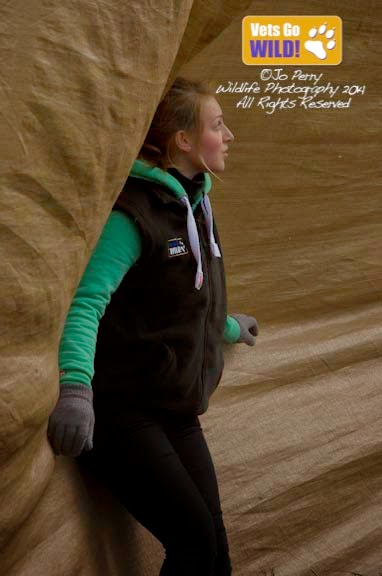Day two was another early start, breakfast was at 5.50am and
then we set off at 6.20am to head to another part of Amakhala to experience our
first mass capture. We were moving
groups of Zebra, Red Hartebeest and Blesbok whose numbers had outgrown the
reserve. After members of the capture
team had set up the pen yesterday, we assumed our positions for the stampede!
The capture pen is a temporary structure set up on the
reserve consisting of poles, wire cables and canvas curtains cunningly
disguised with branches and bushes. The
animals were herded towards the pen by a helicopter, which used a siren to let
us know when the animals had entered certain areas. It was our job to close and secure the curtains
behind the animals, imitating a solid wall and allowing them to be funnelled
towards the waiting truck. Some of the
animals such as the zebra, weren’t too keen and insisted on attempting to
escape regardless of who stood in their way – quite an adrenaline rush, as it
was our job to convince them to run towards the truck and not us! This was achieved by shouting, waving our
arms about and hitting the curtains.
Once the zebra were loaded, they were sedated from a
distance using a pole syringe, as they were quite feisty and surprisingly big
(averaging 350kg!)
After returning to the lodge for lunch we were debriefed on
our activities for the afternoon. There
were 15 Black Wildebeest that still needed relocating but could not be herded
across the deep river towards the pen. Instead
of another mass capture Dr Fowlds sedated these by darting them from a
helicopter. We were split into 3 teams,
each responsible for collecting and treating the darted wildebeest. Each team followed the helicopter and the stampeding
herd in the back of a pickup truck; when the animal was sufficiently sedated we
loaded it onto a stretcher and transported it back to the lorry. Here we
administered antibiotics, vitamins and an extra sedative, whilst monitoring the
anaesthetic and keeping it in the correct recumbency. Once all teams had their animals loaded and
medicated we coordinated the anaesthetic reversal as we did with the Buffalo
yesterday.
Further monitoring from outside the truck ensured the
Wildebeest recovered well and were safe to transport.
Todays exhilarating procedures highlighted the need for
speed, accuracy and good teamwork to ensure the safety of everyone involved
given the unpredictable nature of wild animals!
Written by Siobhan Cox and Shamanthi Shankar


















Exciting and rewarding work! Love the action-packed shots and especially the buffalo eye close-up! Well done Jo, again!
ReplyDeleteGreat photos. The students look as if they are really absorbed in what they are doing!
ReplyDelete